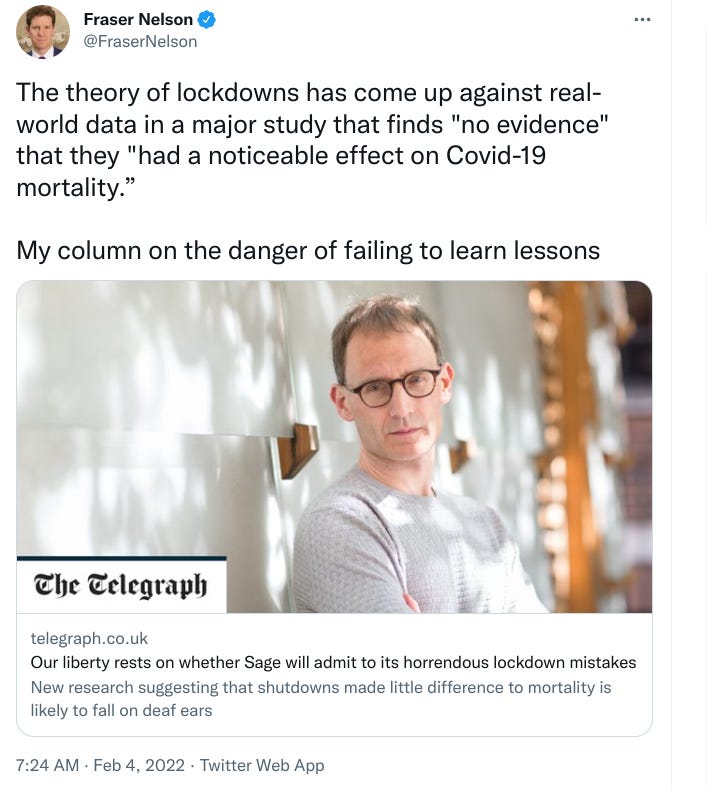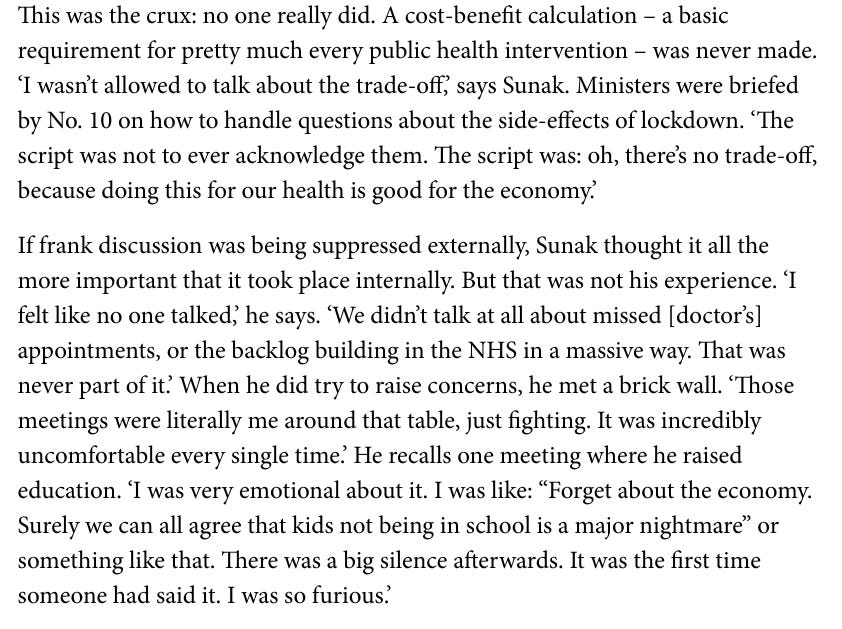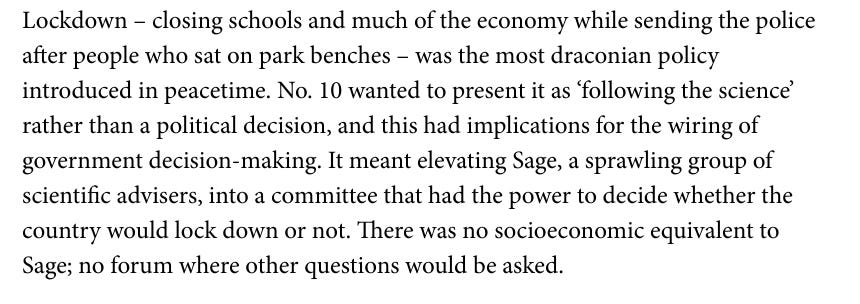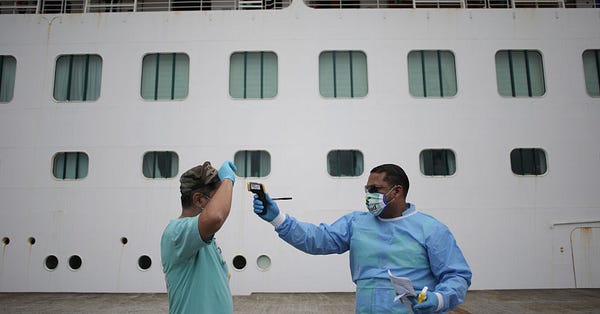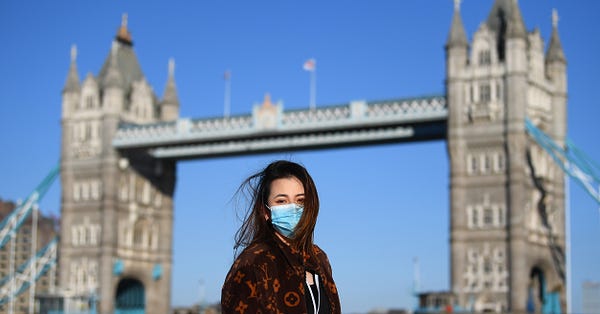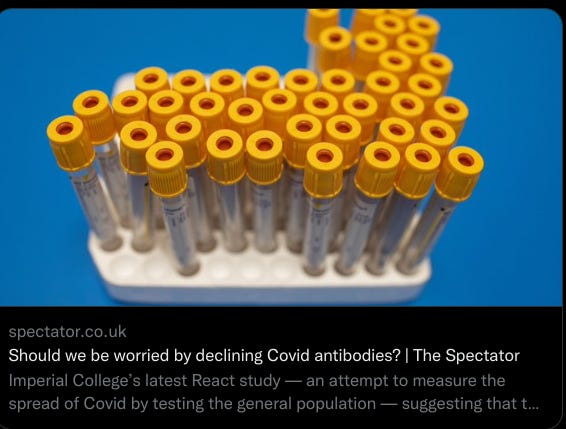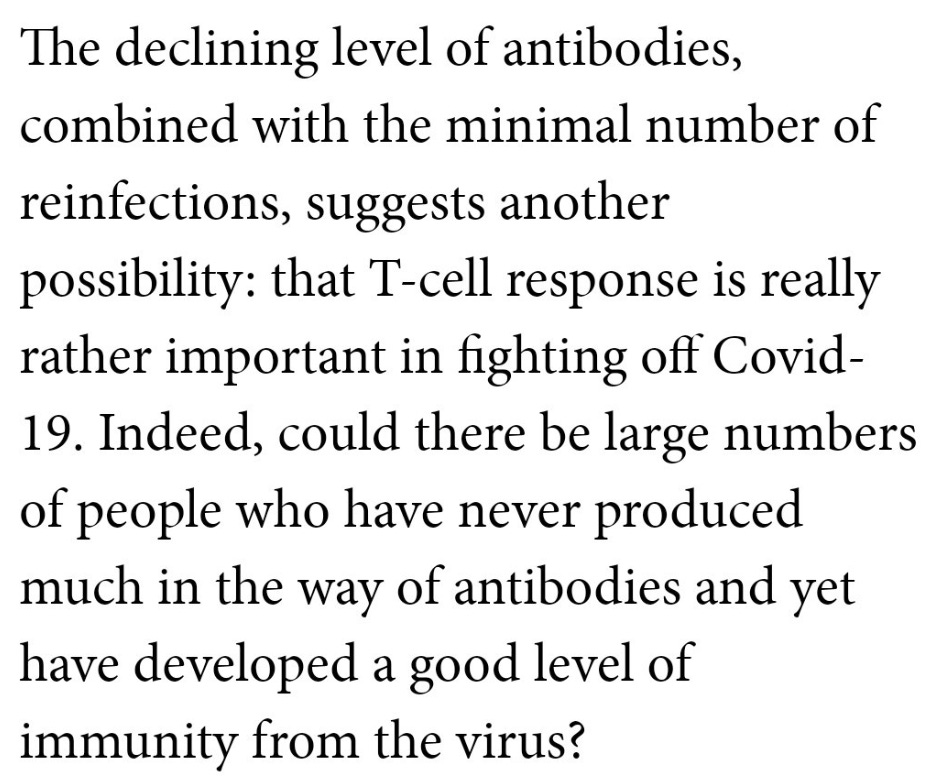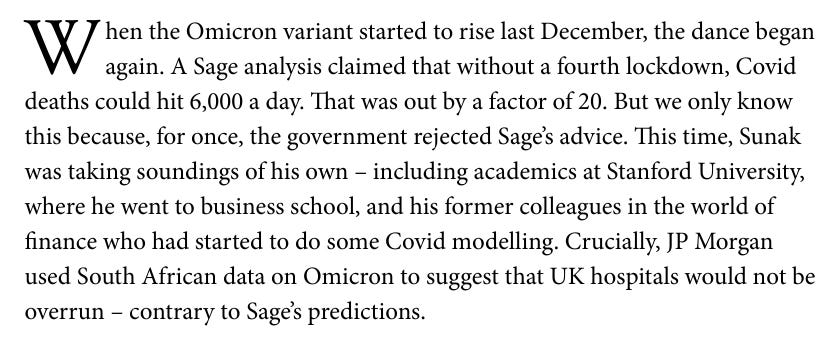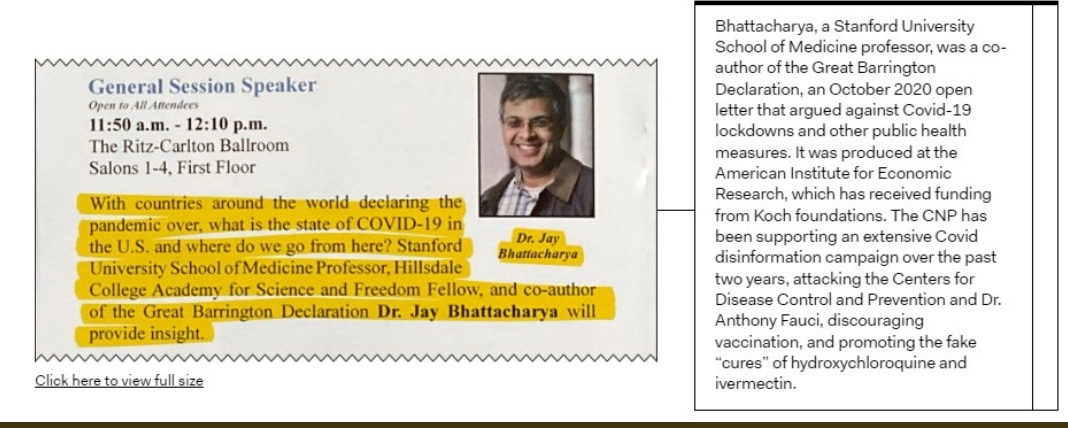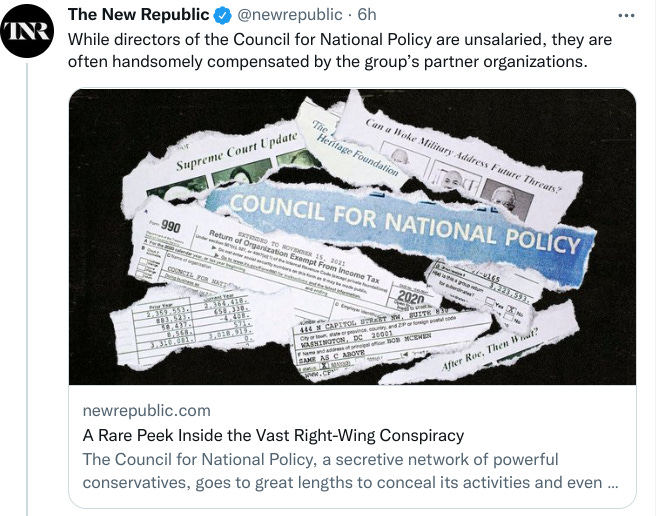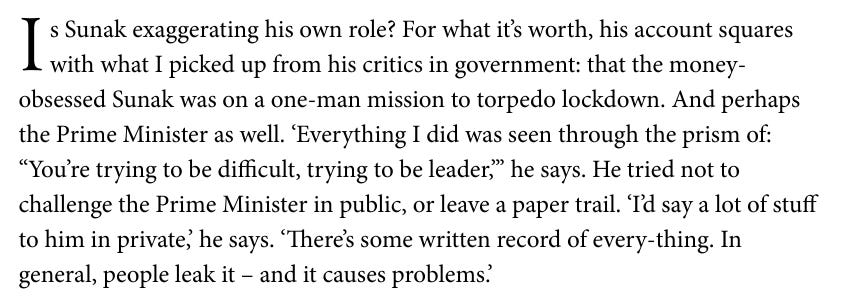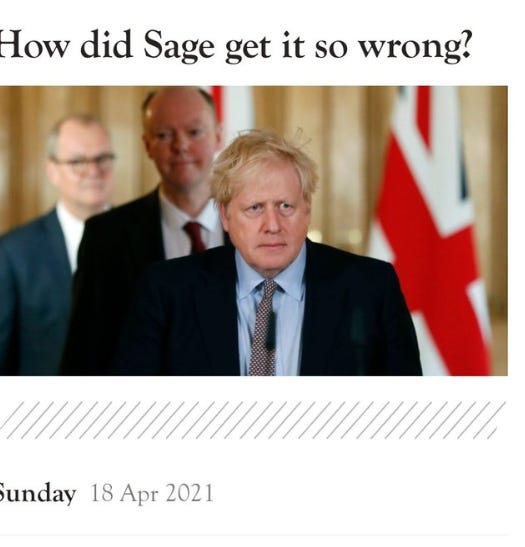Expose: The Economic Argument & Rishi Sunak
Creating Narratives: The Spectator's selective memory
Rishi Sunak, former Chancellor and most likely to be failed leadership candidate for the Conservative Party leadership’s interview with the Spectator is being paraded as a sign of vindication by supporters of the Great Barrington Declaration. In his tale of being a lone voice with no influence Sunaks claims of attempts to silence all debate has missed out several important pieces of information.
For instance in his claims no economic modelling was done Sunak appears to have forgotten that economic modelling for a road map out of the pandemic was done in April 2020. Sunak should know this, he commissioned the modelling for himself in the Treasury. Fraser Nelson should also know this because he was so impressed that he decided to employ the modeller at the Spectator.
It’s interesting that Sunak chose the Spectator for the interview, considering the role the Spectator has played throughout the pandemic as a constant voice of opposition to measures, from herd immunity and no second wave to PCR false positives and now questioning the need for boosters.
Lockdown
Fraser Nelson begins by setting out the Spectator’s view of lockdowns.
Nelson and Sunak later in this piece are making the argument that covid measures are responsible for the NHS waiting list and not the virus. The belief that allowing more transmission and not taking measures in hospitals would somehow have allowed the NHS to continue to function normally does not match the reality faced by front line workers. The hospitals did not spend large periods of time empty as the Spectator’s Toby Young claimed in April 2020 when dozens of fake nurse accounts calling to unlock and embrace herd immunity were identified on Twitter.
The Spectator has also chosen to discount covid as a likely cause for the rise in excess deaths preferring to attribute this to lockdown harms while Toby Young is suggesting in his Daily Sceptic blog that the vaccine is killing a large number of people.
The SAGE minutes are available online, this sounds like either the 4th SAGE meeting on 4 February or the 7th meeting on 13 February. Here at the start Sunak seems to be complaining that all he received was a short summary on A3, however at the end of the article he complains that he was calling for just simple one page summaries and was ignored.
He also says he had an issue with unexplained modelling. almost suggesting that information was being kept from him.
SAGE modelling is available on the government website, it includes modelling methodology. Fraser Nelson should also know this as the Spectator had written articles criticising the methodology used by various SAGE models. While 500,000 deaths as a worse case scenario is often quoted at this point the government strategy was to pursue herd immunity and not introduce many measures. The modelling around the time the UK went into lockdown was for 250,000 deaths, but with a higher hospitalisation rate leading to predictions the NHS would collapse.
Its important to understand that its been the Spectator’s opinion all along that lockdowns and measures like masks do not significantly cut transmission. In February 2022 Fraser Nelson writing for the Telegraph trumpeted a study that was widely reported as vindicating the Great Barrington Declaration, sections of the media are still quoting the study.
However…


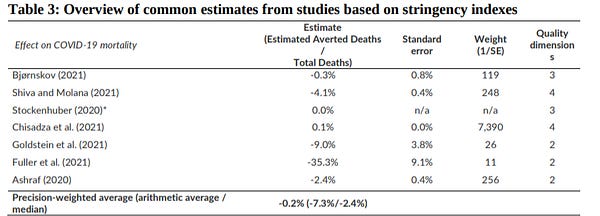









Ignoring many studies contradicting his view, Fraser Nelson has cherry picked a study which relied on cherry picking. Who was responsible for this “major study” as he described it?
Sunak claims he had a mole in SAGE, for some reason this led me to think about one of the most important points in the first wave for the UK. Robert Peston’s article in the Spectator setting out the UK’s herd immunity strategy that required maintaining as a transmission rates as high as possible without crushing the NHS. Peston has stated that his impeccable source was not Dominic Cummings as widely rumoured. Cummings himself has tried to distance himself from responsibility for the herd immunity strategy.
The herd immunity strategy wasn’t treated as a warning, for more than a week the UK media tried to sell the idea, but the general public didn’t agree and started withdrawing themselves from workplaces and pulling their children out of school. What if it was leaked to try and stiffen wavering resolve inside Downing Street?
Cost-benefit
Cost-benefit analysis of the impacts of lockdown is a subject that’s often raised, the question is, how would this be calculated. Estimating spread of infection, death and hospitalisation rate is relatively simple compared to for instance calculating the potential mental health impact of lockdowns across the student population compared to the mental health impact of the grief of more children losing loved family members. Of course this argument is bypassed if you only trusted non-peer reviewed papers put out by libertarian think tanks claiming lockdown measure had no impact on transmission.
If that’s the starting point then you don’t need to do cost-benefit analysis because of the belief there is no benefit.
Three million workers slipped through the gaps in Sunak’s financial safety net for lockdown, small businesses were provided with loans that they must now think about paying back in the middle of a cost of living crisis. Unlike other equivalent countries that provided full wages with schemes that allowed flexibility to still work and were put in place for a year or two, Sunak’s furlough only provided 80% of a worker’s wages for a few months meaning low paid workers were plunged into financial difficulty and uncertainty. Workers without decent sick pay in their contracts and the self employed were also financially punished when they followed the rules and isolated.
If the financial and psychological harms to lockdown were one of Sunak’s concerns then he failed to do what was within his power and remit to protect millions.
Sunak claims there were no efforts to weight health vs wealth, and that there was silence from the media and inside the government on this, however he did commission modelling on the cost of lockdown.
Philip Thomas’ J-Value
24 March, the same day as Sunetra Gupta’s herd immunity study was splashed across the papers, Philip Thomas a professor of risk management at Bristol University published a paper that also made headlines. The paper claimed a 6% fall in GDP caused by lockdown would result in more deaths than the Imperial model used by SAGE predicted would die from letting covid pass through the population. The paper’s author Philip Thomas applied a risk model called the J-value designed for the nuclear industry to lockdowns. This is Thomas’ description of the J-value.
“Life quality lies at the core of J-value, this allows us to place a monetary value on the life expectancy that the safety spending will achieve. The J-Value is found by dividing the actual cost of the safety measure by the maximum that is reasonable to spend. A value of less than one indicates that the spend is justified. A value greater than one suggests that spending resources may not be justified.”
Thomas concluded lockdowns would kill more people than lockdowns. He arrived at that conclusion by first calculating the total number of years likely to be lost by the population as a whole, then dividing that by the remaining life expectancy of the average Briton alive today. This gives a figure for the number of 'average lives lost'. In contrast he argued that even if the UK ends up suffering 250,000 Covid-related deaths, then this would only be equivalent to 45,000 'average lives' as those who die of Covid tend to be elderly, 82 on average. That means that even before catching the virus they would have had much shorter remaining life expectancy than the typical Briton.
This means the life of one “healthy” worker lost due to lockdown harms was worth more than the lives of five elderly people who died from covif.
The central assumption here is that each percentage point fall in GDP is directly proportional to a certain percentage increase in deaths, this isn’t supported by the history of recessions. Around the same time Nature published a review study of recessions around the world and through history, not all recessions have lead to significant increases in death, while sometimes small recessions have led to large increases in death, some far deeper recessions haven’t, this is also seen in the inverse, rises in GDP do not automatically mean increased life expectancy. While the health of the economy is important for the health of the people, the policy choices politicians make in response to rise and falls in GDP have the greater impact. With this in mind, how is it possible to calculate the amount of lives lost from a fall in GDP when future policy decisions which themselves will also affect GDP aren’t known.
There is also an issue with how to predict economic trajectories at the start of a pandemic, we didn’t know enough about the virus to be able to predict its evolutionary future and in a global economy its impossible to factor in the economic and pandemic policy choices of all the other major economic countries. A pandemic triggered downturn is completely different to a usual recession, this isn’t the product of market failure like the banking crisis of 2008 or the dot com bubble bursting, it’s not a supply or demand issue, an external factor is artificially suppressing economic activity, there is the possibility of a spring back when suppression is released, and this is what we have seen
The J-value could be the most effective modelling tool possible, but put junk in and you get junk out. Economic modelling, particularly around rare events is notoriously unreliable, so due to the amount of unknown variables all Thomas had to work with was junk. The UK had one of the largest falls in GDP in 2020 (in April the economy shrank by over 20%) but we haven’t seen the huge surge of non-covid excess deaths as Thomas predicted. Granted he will argue that as covid deaths didn’t reach 250,000 the excess of “average lives” would be much smaller to balance the number of elderly people we did lose.
While trying to estimate the total harm from falls in GDP in terms of life years lost Thomas’ harm analysis only considers death as a harm from covid, organ damage and long covid aren’t considered, the fact these are happening in younger impact means this would have a higher value in his model. It also doesn’t consider the economic harms of covid, workers deaths, long term illness keeping people out of the workplace and the short term impact of days lost from sickness.
Fundamentally, like most criticisms of the first lockdown, it misses the basic reality of March 2020, uncontrolled spread was going to result in a defacto lockdown anyway for instance schools were already starting to shut before the announcement to close. We have the same issue with the “focused protection” argument, its advocates don’t seem to realise how many clinically or clinically extremely vulnerable people there are, or their valuable contributions to many workplaces. On top of it all there is the more than minor issue of the NHS collapsing.
Like Gupta’s herd immunity report, Thomas’ conclusions received disproportionate media coverage without any scrutiny of the details of the calculations which continued to be quoted throughout 2020. The paper was non-peer reviewed.
The economic argument had not been silenced as Sunak and Nelson claim. A look back at newspapers in April will show sceptics weren’t silenced, they were being platformed every day despite having far less evidence to back their views that SAGE who were being vilified by the right wing media.
A week after Thomas’ J-Value hit headlines at the start of April, Sunak invited Thomas into the Treasury to model routes out of lockdown, Thomas also provided evidence to the Treasury Select Committee in June 2020.
Four options were evaluated.
Keep the Basic Reproduction Number, RO below 1.0 (Government’s currently declared policy)
Move out as quickly as possible without overstraining the health services
Move out completely in 2020 while minimising Covid-19 cases
Move out of lockdown as fast as possible
Thomas concluded that Option 3 would be the optimal choice to minimise the nation’s total loss of life and ensure a quicker economic recovery to avoid additional deaths from factors other than Covid-19. The differentiation between 2 and 3 isn’t entirely clear, 3 must mean allowing the NHS to face considerable pressure but not collapse. He suggested a second, large wave of infections would be expected.
The estimated deaths from falls in GDP is a crude calculation for an incredibly complex subject and the modelling detaches economics from epidemiology. By making GDP directly proportional to human life, it seeks to justify acceptable deaths for the greater good with the more vulnerable valued less than an “average life.” I’m reminded of the Spectator’s attempts to rehabilitate and rebrand eugenics pre-pandemic.
Thomas’ work for the Treasury and his appearance at the Treasury Select Committee also seems to contradict Sunak’s claims there was no forum available to discuss the economic impact. The roadmap to return to normal that the government was following until the Alpha variant knocked them off course was in line with Thomas’ recommendations.
Sunak suggests people in the UK were more fearful that their counterparts in Europe, did Sunak consider that the more cavalier way the UK approached coming out of lockdown without having first put in effective planning like creating an effective test and trace system may have contributed to the public’s unease. Japan managed to avoid national lockdowns, school disruption and took a far smaller economic impact from covid due to a focus on clean air, masks and contact tracing, all measures the Spectator has dismissed.
The cost of Eat Out to Help Out was enough to ensure every classroom in the country had effective ventilation and filtration with money to spare to offer support for other workplaces to address airborne transmission. This was a political decision, as are all decisions made by politicians.
Schools
Sunak’s claims of the power of SAGE and Johnson hiding behind “following the science” is questionable when a study of SAGE minutes shows Johnson often failed to follow their recommendations. Schools were one of the areas where SAGE was most ignored.
The Government wasn’t following SAGE’s advice, so whose advice were they following? It took a while but eventually campaigners received answers to their FOI or more specifically a lack of answers.
The FOI asked for “minutes of all meetings Education Secretary Gavin Williamson, Schools Minister Nick Gibb or Education Select Committee Chair Robert Halfon attended where the Department for Education guidance to schools document was discussed prior to its release in August 2020”, the same request was made regarding the June 2020 guidance.
The response read
“Following a search of the Department’s paper and electronic records, I have established that the information you requested is not held by the Department. Specific discussions or meetings did not take place on the guidance for schools. However, discussions took place on wider education issues which civil servants used in their policy formation.”
The DfE didn’t write the guidance, they didn’t even discuss it, so where did it come from?
17 May I was contacted by a reliable source inside the DfE.
“DfE have been bounced into doing this (schools return etc). They weren’t expecting it so they weren’t prepared for it, and they don’t want to do it at this time. But the Treasury (being senior) has pushed them into it (return to work, save some money etc - despite today’s announcements) Said made it clear they couldn’t support talk re a return any earlier (there was pressure on this) as the supporting data (deaths/infections) were nowhere near by government’s own criteria. They’re keeping fingers crossed things change there significantly. Feels there is much confusion and much nervousness around policy being arrived at in a rushed way.”
I received similar messages regarding the DfE having no control over its own policy at other points later in the pandemic.
Spectators’ Covid Coverage
Its worth considering what the Spectator was reporting over the summer and autumn of 2020, and who they were platforming. They tried very hard to persuade their readers the pandemic was practically over already.


In August, John Lee, who would go on to be a HART member, in an extensive article asked if “a crisis of awareness, in which incomplete information led to a wildly disproportionate reaction?” He went on to argue that there was little evidence of the impact on the effectiveness of lockdown or other measures like masks with all countries seeing similar sized waves, ( conveniently ignoring New Zealand, Australia, Israel, Japan etc where this wasn’t the case) before going into a long explanation of T-Cells to conclude that cross-immunity meant that herd immunity was close to being achieved.
12 August Heneghan argues “Could mass testing for Covid-19 do more harm than good?” Following it up with “It’s a mistake to think all positive Covid tests are the same on 21 August.
13 September Heneghan wrote an article calling for less measures as cases rose, “Boris Johnson needs to bin the rule of six.” The next day he then questioned the reliability of testing with “What does a case of Covid-19 really mean?”
19 September Ros Clark wrote “The growing evidence for T-Cell Covid immunity.” Again citing the Californian pre-print, he said several other studies had confirmed its findings. Several German studies had shown T-Cell responses from blood samples taken before the pandemic, in one 23 out of 68 samples had a response, in another it was 12 from 26. He claimed this meant that herd immunity threshold was likely around 23% and referred to Manaus in Brazil “where a runaway epidemic died back for no obvious reason.” Concluding “Ministers might care to review the wider evidence on Covid-19 and immunity to satisfy themselves they are making the right decision.” Manaus would go on to see several deadly waves but in the second half of 2020 it was regularly held up as an example of the promised land of herd immunity.
Also on 19 September Robert Dingwall, a controversial and outspoken member of NERVTAG and JCVI at the time wrote in the Spectator questioning the science behind social distancing.
30 September Heneghan attacked predictions Chief Scientific Officer Patrick Vallance had made regarding growth in cases.
4 October Heneghen questioned if hospital admissions were really rising and a cause for concern.
12 October Kulldorff article promotes the GBD “Covid, Lockdown and the retreat of scientific debate.
27 October
Philip Thomas also started writing for the Spectator.
I wonder why the Spectator skipped over the UK’s deadliest wave?
September circuit breaker meeting
Sunak claims his one act of defiance was a speech in September.
SAGE had recommended a circuit breaker in September 2020 to reverse exponential growth
A selection of headlines from September shows how sections of the media were lobbying hard in public against the introduction of measures,
16 September – Rule of six is damaging: Welby tells Johnson – Daily Telegraph
17 September – New clampdown to defeat virus would be ‘disastrous’ for the economy, Boris: I’ll Stop At Nothing To Avoid Second Lockdown – Daily Express
18 September – As PM warns “2nd wave is coming”, Rishi’s Pleas To Boris: Don’t Go Too Far – Daily Mail
22 September – UK Slammed into Reverse, Boris to impose new diktats amid fears of soaring infections - as row breaks out over doom-laden expert projections – Daily Express
24 September – Price We Can’t Afford To Pay – Daily Mail
25 September – Rishi: Now It’s Time To Live WIthout Fear, As he unveils plan to save jobs, Chancellor upstages cautious PM with new battle cry - and says what so many have been thinking – Daily Mail
26 September – Ministers’ plan to save Christmas at all costs, mass testing, roll out of vaccine and break from ‘rule of six’ all under consideration – Daily Telegraph
An FOI by the Byline Times obtained Boris Johnson’s meetings with journalists from July to September 2020 suggesting the same sections of the media were also lobbying Johnson directly against measures.
2 July – Gary Jones and Mick Booker, the Express and the Sunday Express
7 July – Tony Gallagher, the Times
9 July – Geordie Greig, Daily Mail
13 July – Victoria Newton, the Sun
22 July – Charles Moore, the Telegraph
18 September – Rupert Murdoch, News Corp
18 September – Rebekah Brooks, News Corp
21 September – Aidan and Howard Barclay, the Telegraph
21 September – Lord Rothermere, Daily Mail
21 September – Victoria Newton, the Sun
21 September – Geordie Grieg, Daily Mail
21 September – Tony Gallagher, the Times
21 September – Chris Evans, the Telegraph
21 September – Tim Davie and Fran Unsworth, senior BBC executives,
23 September – Fraser Nelson, the Spectator
Sunak also seems to have forgotten that Johnson chose to ignore SAGE’s recommendations for a circuit breaker. The decisive point was said to be a meeting that Sunak arranged with Sunetra Gupta, Carl Heneghan and Anders Tegnell of Sweden. Henghan has written repeatedly for the Spectator so its odd that Nelson also forgot to mention this meeting.
What was discussed at this time appears to be a matter of debate, with Dominic Cummings’ account at odds with Sunak’s.
After Dominic Cummings’ departure from Downing Street he agreed to give evidence to parliament, the session went on for hours, with Cummings portraying himself as the voice of reason in a chaotic government. He was asked about the meeting on 20 September with Gupta, Heneghan and Tegnell.
‘Then, on the Sunday evening, there was a meeting with a combination of SAGE scientists and some external people.’ Dominic Cummings evidence further cited for the record ourselves
‘By this point, unfortunately, the Prime Minister was listening to various people who were saying things like, “There’s already herd immunity in the population; there won’t be any second wave, etc, etc.”
So we had the meeting in the Cabinet Room on Sunday evening. Patrick and Chris gave their view. A guy called Heneghan and a woman from Oxford called Professor Gupta, I think it was, gave the kind of ”Don’t lock down” view.
John Edmunds, who is on SAGE, said, “Surely we are going to learn the lessons of March. Here’s what the data will be. The only logic of not doing a lockdown now would be that you are not going to do it at all. There is no way that you are going to make that decision. Just do it now; otherwise it’s all going to be worse.”
The Prime Minister said, “I’m not persuaded of that.”
Although there is no official documentation from the meeting (according to FOI requests), Gupta and Heneghan produced written responses to Cumming’s comments. It was a call for “focused protection”.
Some interesting points from their evidence.
Gupta: The key issue to consider in directing policy is whether or not it is justified to take extraordinary measures in response to Covid-19 – given that no extraordinary measures are in place for other infectious diseases such as influenza, pneumococcal pneumonia, and indeed other coronaviruses. We have reached an accommodation with these other diseases and accept that they cause a level of disease, suffering and death, but not sufficient to change our way of life. Given that it is not possible or realistic to attempt to eliminate Covid-19, our goal should be to achieve levels of herd immunity that permit the same situation to prevail with Covid-19.
Heneghan: Xmas break - 5000 more deaths a week will occur at the height of the seasonal effect. Xmas can be extended for schools by 2 weeks with minimal disruption because of planning lead-in time. Could act as a breakwater at the height of viral respiratory illness “season”.
They suggested 5000 deaths a week was an acceptable death toll for keeping the economy open. Heneghan admits here that schools do have a significant impact on transmission suggesting schools shouldn’t return at the start of January. This evidence was submitted mid 2021
Who does Sunak listen to?
Sunak says that he taking advice public health advice from academics from his former business school at Stanford University. Stanford Universities Hoover Institute is the US’ oldest conservative think tank promoting personal and economic liberty, free enterprise, and limited government. Sunak doesn’t say who these academics are but there are several senior sceptics linked to covid disinformation at Stanford, Jay Bhattacharya author of the Great Barrington Declaration, John Ioannidis and former Trump adviser Scott Atlas.
The US Covid Oversight Committee’s investigations into the pandemic response has produced an evidenced report titled The Atlas Dogma. Chairman Clyburn released the following statement on the report.
“The Select Subcommittee’s investigation has revealed extensive evidence of the Trump Administration’s efforts to undermine the nation’s public health response to the coronavirus crisis in an attempt to benefit the former president politically. As today’s report makes clear, senior officials in the previous Administration embraced a dangerous and discredited herd immunity via mass infection strategy promoted by non-expert advisers like Dr. Scott Atlas and recklessly allowed the coronavirus to infect Americans before vaccines were widely available. This dereliction of duty resulted in significant loss of life that could have been prevented. We must honor those we’ve lost by bringing this shameful recent history to light and ensuring that it is never repeated—politics must never again be prioritized over the health and lives of the American people.”
The award winning journalist Anne Nelson who wrote the book Shadow Network has just published her findings from the latest leaks from the Council for National Policy showing Bhattacharya was a speaker at one of the secretive organisations latest meetings.
Full article here
Sunak and Nelson’s selective memories
The question, as with all of the Spectators coverage, is what are they hoping to achieve with this interview? The covid inquiry is about to begin, efforts have already been made by disinformation groups to influence its focus. While some mistakes in the first wave can be forgiven, the Alpha variant wave was the deadliest.
While the Spectator has been relentless in its attacks on SAGE, I leave you with a selection of Philip Thomas’ contributions for the publication.










